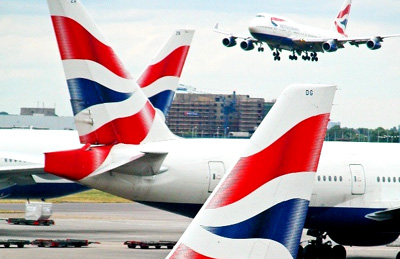
New system to help cut flight delays at Heathrow
Abu Dhabi, February 18, 2014
NATS, a leading global provider of Air Traffic Management (ATM) services, has introduced a new system, that will separate arriving aircraft at Heathrow by time instead of distance, thus radically cutting delays and reducing cancellations due to high headwinds.
The system will bring benefits and save time for travellers flying into London from the GCC, said a senior official.
"The introduction of time based separation at Heathrow is the world’s first and will deliver benefits for GCC nationals travelling to London," remarked John Swift, the Middle East director.
"The number of travellers from the region is expected to continue increasing over the coming years, following the launch of the visa waiver initiative for UAE, Oman and Qatar nationals. It is therefore paramount that we work on helping to make travel as smooth and efficient as possible," he stated.
According to VisitBritain, there will be a 40 per cent increase of tourists from UAE heading to London by 2020.
“Time-based separation will reduce delays and cancellations while improving the airport’s resilience against disruption. That’s why we’ve accelerated the project to bring it into operational use in 2015,” explained John.
Traditionally, flights are separated by set distances dependent on the type of aircraft and the size of the spiralling turbulence – or wake vortex – they create as they fly.
During strong headwind conditions, aircraft fly more slowly over the ground resulting in extra time between each arrival. Having to maintain a set separation distance in those conditions therefore reduces the landing rate and can have a significant knock-on effect to airport capacity, causing delays and cancellations.
The introduction of a time-based separation method at Heathrow will help maintain the landing rate and save 80,000 minutes of delay every year – halving the current delay figure while significantly reducing the need for airlines to cancel flights due to the affects of strong headwinds.
Supported in the Airports Commission’s interim report in December, the delivery of time based separation comes after three years of exhaustive analysis.
According to Swift, NATS has studied over 100,000 flights using state of the art equipment to accurately measure the behaviour of aircraft wake vortices in strong headwinds.
The results show that they dissipate more quickly in windy conditions, therefore allowing aircraft to be closer together on final approach, he added.
NATS managing director (Operations) Martin Rolfe said: “Safety is always our absolute top priority and we’ve done a huge amount of simulation and analysis to ensure the change to procedures is robust and considered. While time based separation is being introduced initially at Heathrow, it would also prove beneficial at other major airports both in the UK and around the world.”
The deployment of TBS builds on work NATS has undertaken with a number of partners through the European Commission’s Single European Skies programme and demonstrates the world leading capability which the company continues to deliver in the Gulf region.
The new method for organising arriving aircraft is set to become operational at London’s biggest airport in spring 2015, he stated.-TradeArabia News Service







